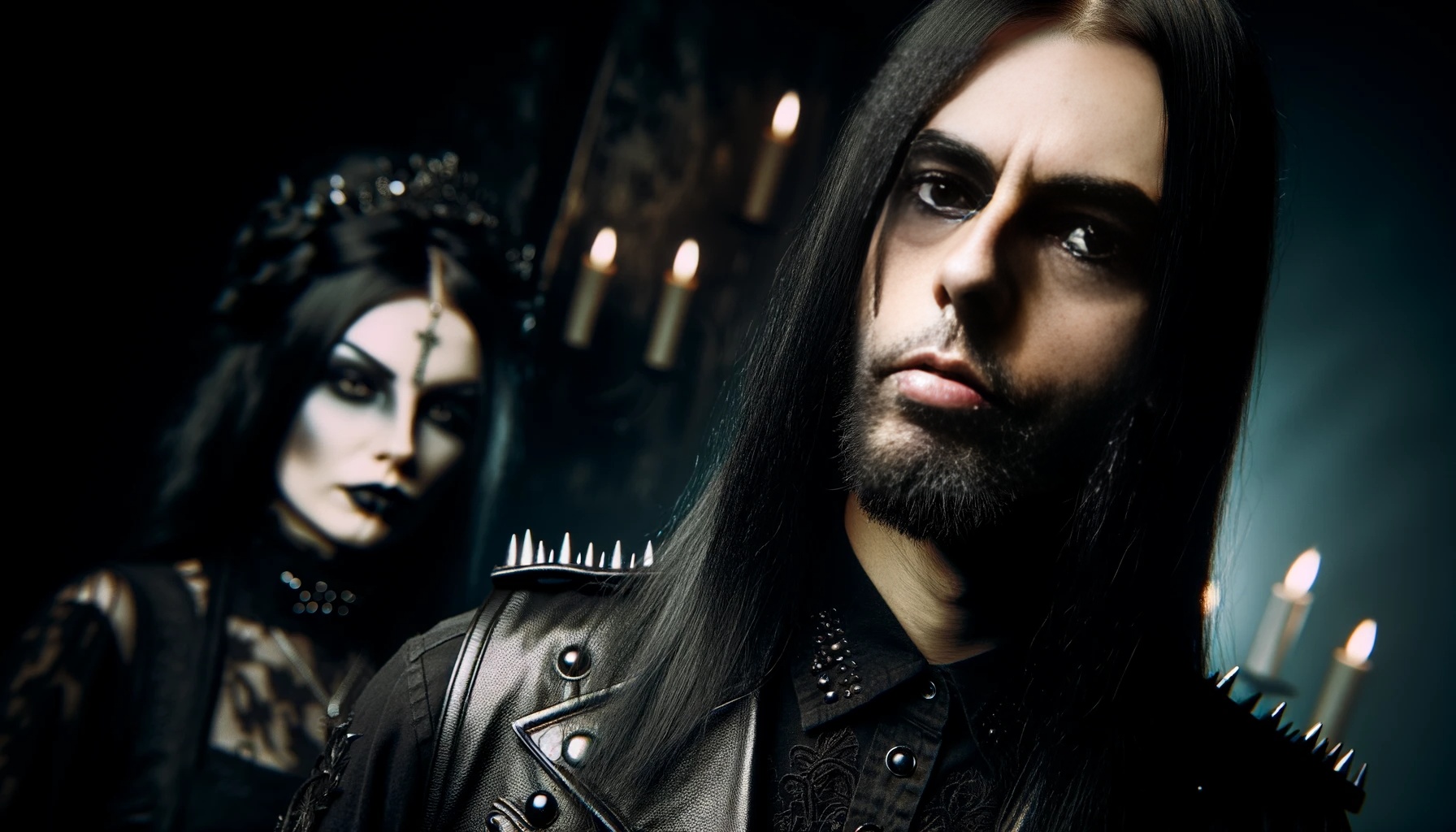Gothic and metal cultures, once the domain of the underground, have experienced a significant surge in mainstream popularity over the past few years. What was once considered a niche and subversive fashion statement has now been co-opted by high-end designers and fast-fashion brands alike. The black-clad aesthetic, the dark and brooding imagery, and the rebellious attitude that defined these cultures have been repackaged and sold to the masses, often without any understanding of or respect for their original significance. In this post, we’re going to dive deep into the appropriation of Gothic and metal culture in mainstream fashion, exploring how it happened, what it means for the subcultures, and why it matters.

The Rise of Gothic and Metal Culture
Before diving into its appropriation, it’s essential to understand what Gothic and metal cultures represent. Gothic culture emerged in the late 1970s and early 1980s, growing out of the post-punk movement. It is characterized by a fascination with the darker aspects of life, a love for the macabre, and a deep connection to music, particularly bands like Bauhaus, The Sisters of Mercy, and Siouxsie and the Banshees. The aesthetic includes a lot of black clothing, lace, velvet, and leather, often paired with silver jewelry and dark makeup.
Metal culture, on the other hand, finds its roots in the late 1960s and 1970s, with bands like Black Sabbath, Judas Priest, and Iron Maiden laying the groundwork. Metal is more than just music; it’s an attitude, a way of life. The fashion associated with metal includes band t-shirts, leather jackets, spikes, chains, and an overall rugged and rebellious look.
Both of these subcultures have always been about more than just fashion. They represent a way of thinking, a rebellion against the norm, and a deep-seated connection to a community of like-minded individuals. The clothes, makeup, and accessories are outward expressions of a deeper identity.

The Mainstream Invasion
In recent years, there has been a noticeable shift in how these subcultures are perceived. What was once considered alternative and fringe is now being embraced by the mainstream. High-end designers like Alexander McQueen, Rick Owens, and even brands like Gucci have dipped their toes into Gothic and metal aesthetics. Runways are awash with models wearing black leather, studs, and spikes, while fast-fashion brands like H&M and Zara offer watered-down versions of these styles to the masses.
This shift raises a critical question: when did Gothic and metal culture become trendy? The answer lies in the cyclical nature of fashion and the industry’s constant search for something new, something that hasn’t been exploited yet. Gothic and metal styles offer a rich well of inspiration, full of dramatic visuals, rebellious attitudes, and a sense of mystery that can be marketed as edgy or cool.

The Impact on the Subcultures
While some might argue that the mainstream exposure is a positive thing, bringing more attention to these subcultures and potentially even expanding the community, the reality is far more complex. The appropriation of Gothic and metal fashion often strips these styles of their original meaning, reducing them to mere trends devoid of the cultural significance they carry.
For many within the Gothic and metal communities, fashion is not just about looking a certain way; it’s about expressing an identity that goes against the grain, that questions societal norms, and that embraces the darker aspects of human experience. When mainstream fashion co-opts these aesthetics without understanding or respecting their origins, it risks diluting and trivializing what they stand for.
Moreover, the mainstream adoption of these styles often comes with a price tag that is far out of reach for the average Gothic or metalhead. High-end brands sell these items at exorbitant prices, creating a sense of exclusivity that is antithetical to the inclusive, community-oriented nature of these subcultures. This not only alienates those who have been part of the scene for years but also makes it more difficult for newcomers to access the culture.

Cultural Appropriation vs. Appreciation
It’s essential to differentiate between cultural appropriation and cultural appreciation when discussing the mainstream adoption of Gothic and metal styles. Appropriation happens when elements of a culture are taken out of context, often by those who do not belong to that culture, and are used in a way that disrespects or misrepresents their original meaning. Appreciation, on the other hand, involves a deep understanding of and respect for the culture in question, and a desire to honor its traditions and values.
Unfortunately, much of what we see in mainstream fashion falls into the category of appropriation rather than appreciation. Designers and brands often cherry-pick the most visually striking elements of Gothic and metal fashion, stripping them of their original context and using them to sell products. This not only disrespects the cultures these styles come from but also perpetuates harmful stereotypes about those who embrace them.

The Role of Social Media
Social media has played a significant role in the mainstreaming of Gothic and metal fashion. Platforms like Instagram and TikTok are full of influencers who adopt these styles, often without any real connection to the subcultures they come from. While some of these influencers genuinely appreciate the aesthetics and have a deep love for the music and culture, many others are simply jumping on the trend bandwagon.
This can create a distorted image of what Gothic and metal culture is really about. For those outside the subcultures, it might seem like it’s all about looking cool and edgy, without any understanding of the deeper meanings behind the fashion. This further contributes to the trivialization and commodification of these cultures, reducing them to mere trends that can be picked up and discarded at will.

Why It Matters
The appropriation of Gothic and metal culture in mainstream fashion is not just a matter of style; it’s a matter of identity. For many who belong to these subcultures, their fashion choices are a way of expressing who they are, what they believe in, and where they come from. When mainstream fashion co-opts these styles without understanding or respecting their origins, it risks erasing the identities and voices of those who have been part of these cultures for years.
Moreover, the commodification of Gothic and metal fashion can make it more difficult for these subcultures to survive and thrive. As these styles become more mainstream, there is a risk that the original communities will be pushed to the margins, their voices drowned out by those who are more interested in profit than in preserving the culture.

How to Stay True to Gothic and Metal Culture
If you’re someone who loves Gothic and metal fashion, it’s essential to stay true to the roots of these cultures. This means supporting independent designers and brands that have been part of the scene for years, rather than buying into the mainstream version. It also means educating yourself about the history and significance of these styles, so that you can wear them with pride and understanding.
Moreover, it’s essential to be critical of how these cultures are represented in mainstream fashion. Ask yourself whether the brands you support are truly respectful of Gothic and metal culture, or whether they’re simply using it as a trend to sell products. By being mindful of these issues, you can help ensure that these subcultures continue to thrive and that their voices are not lost in the noise of the mainstream.

Conclusion
The appropriation of Gothic and metal culture in mainstream fashion is a complex and multifaceted issue. While the mainstream exposure of these styles can bring more attention to these subcultures, it also risks diluting and trivializing their original meanings. As these aesthetics become more popular, it’s essential to stay true to the roots of Gothic and metal culture, supporting independent designers and brands, educating yourself about the history and significance of these styles, and being critical of how they are represented in mainstream fashion.
If you’re looking to explore more about Gothic and metal culture, or if you want to stay connected with like-minded individuals, check out my homepage for more content. You can also connect with me on social media through this link. Stay true, stay dark, and keep the metal alive!




